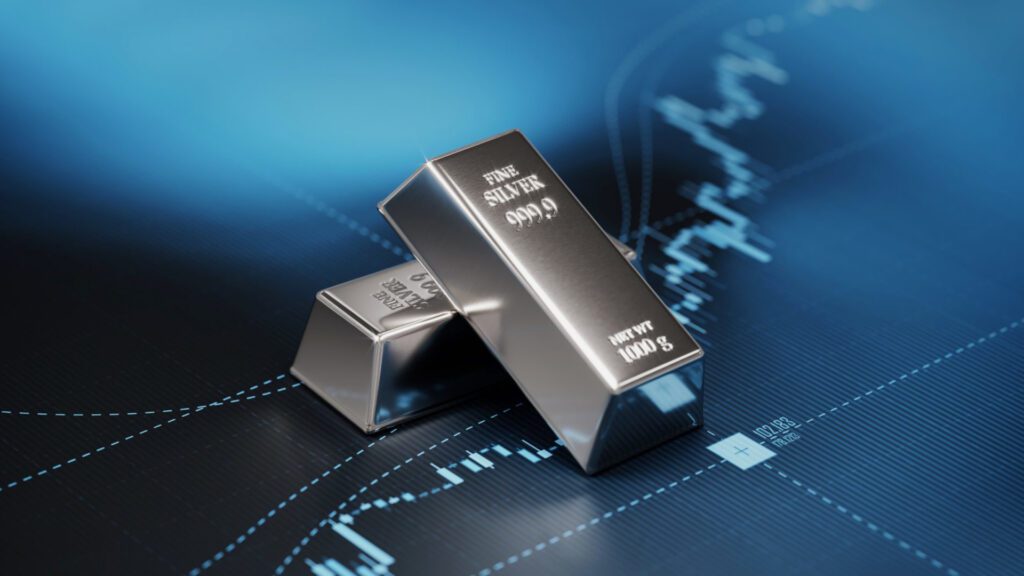- Industrial demand for silver is expected to set a record in 2023.
- According to a forecast by Metal’s Focus in conjunction with the Silver Institute, industrial silver demand is on pace to rise by 8% to a record 632 million ounces.
- According to a separate report, industrial demand for silver is forecast to increase by 46% over the next decade.
- Overall investment demand will remain historically high in 2023 thanks to a big boost in US safe haven demand during the banking crisis last spring.
- The Silver Institute projects another sizeable physical deficit of 140 million ounces in 2023. It will be the third deficit in a row. The Silver Institute called last year’s shortfall “possibly the most significant deficit on record.” It also noted that “the combined shortfalls of the previous two years comfortably offset the cumulative surpluses of the last 11 years.”
The price of silver does not reflect the current supply and demand dynamics. In fact, silver is significantly undervalued right now. One analyst called the current price in the $23 an ounce range “inexcusably low.”
It’s important to keep in mind that while silver is an industrial metal, more fundamentally, it is money.
Industrial demand for silver is expected to set a record in 2023.
According to a forecast by Metal’s Focus in conjunction with the Silver Institute, industrial silver demand is on pace to rise by 8% to a record 632 million ounces. Investment in photovoltaics, power grid, and 5G networks, along with growth in consumer electronics and rising vehicle output are key drivers behind the elevated industrial demand.
Industrial demand accounts for more than half of the total silver demand each year.
According to a separate report, industrial demand for silver is forecast to increase by 46% over the next decade. This reflects a projected rapid 56% growth in the output of the electronics industry.
Manufacturers of electronics and electrical applications are the major purchasers of industrial silver. In 2022, these industries consumed 371.5 million ounces of silver, 67% of the industrial offtake. According to the Silver Institute, the use of silver in solar energy and electric vehicles will help lead this category forward. A recent research paper by scientists at the University of New South Wales projects that solar manufacturers will likely require over 20% of the current annual silver supply by 2027, and by 2050, solar panel production will use approximately 85–98% of the current global silver reserves.
According to the Silver Institute, losses in all other key segments of demand will offset growth in industrial applications. As a result, total silver demand is expected to slow by about 10% this year after setting records in every category in 2022. Nevertheless, the institute still forecasts total silver demand will come in at 1.14 billion ounces, the second-strongest offtake on record.
Silver jewelry and silverware demand is set to fall by 22% and 47%, respectively. A drop in Indian demand will drive the decline as it normalizes after a big surge in 2022.
Physical silver investment is projected to fall by 21% to a three-year low of 263 million ounces. The Silver Institute says most markets have seen lower volumes, but demand has been particularly weak in India and Germany. Record high silver prices in rupee terms both deterred new investor purchases and led to profit-taking in India. Demand for silver coins in Germany took a hit due to an increased VAT tax levied at the beginning of the year.
Overall investment demand will remain historically high in 2023 thanks to a big boost in US safe haven demand during the banking crisis last spring.
On the supply side, mine output is expected to modestly fall by 2%. That follows on the heels of a 0.6% decline in silver production in 2022.
Despite slightly weaker demand, the Silver Institute projects another sizeable physical deficit of 140 million ounces in 2023. It will be the third deficit in a row. The Silver Institute called last year’s shortfall “possibly the most significant deficit on record.” It also noted that “the combined shortfalls of the previous two years comfortably offset the cumulative surpluses of the last 11 years.”
According to the Silver Institute, “The deficit will persist in the silver market for the foreseeable future.”
The price of silver does not reflect the current supply and demand dynamics. In fact, silver is significantly undervalued right now. One analyst called the current price in the $23 an ounce range “inexcusably low.”
It’s important to keep in mind that while silver is an industrial metal, more fundamentally, it is money. Despite being more volatile in the short term, silver tends to track with gold over time. If you are inclined to think the Federal Reserve will lose the inflation fight, you should be bullish on both gold and silver.
At some point, investors will have to reckon with the shrinking supply of silver coupled with rising demand, along with the Fed’s inability to bring inflation back to its 2% target. When that happens, the price of silver will likely take off.
Given the supply and demand dynamics, the skewed silver-gold ratio, and the likelihood that the Fed will not beat price inflation, $22 to $23 silver looks like a great buying opportunity.
Story by Peter Schiff - Redacted shorter to keep to important points and bullet points added by HGG https://schiffgold.com/key-gold-news/industrial-demand-for-silver-on-pace-to-set-record-in-2023/




